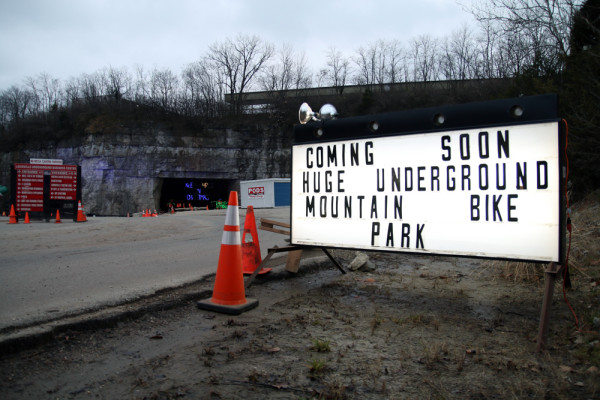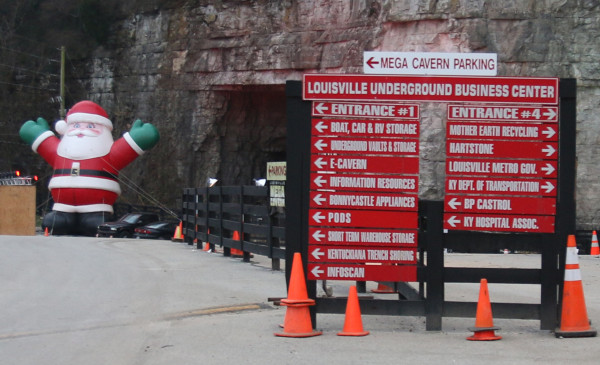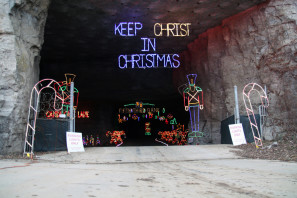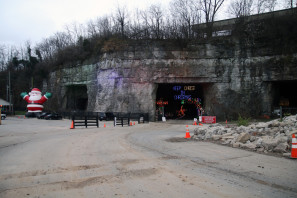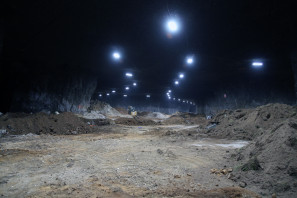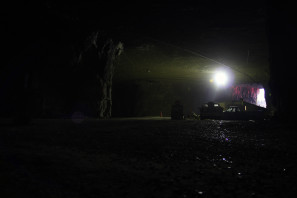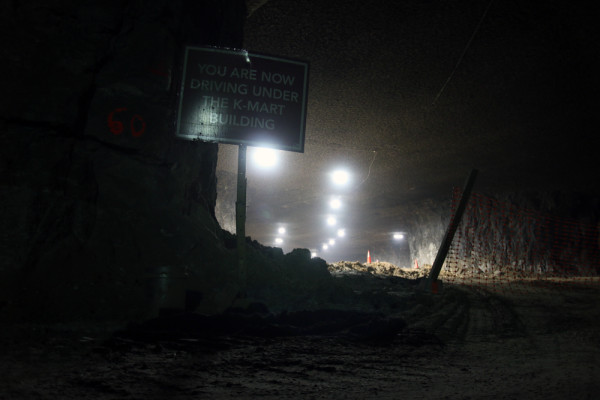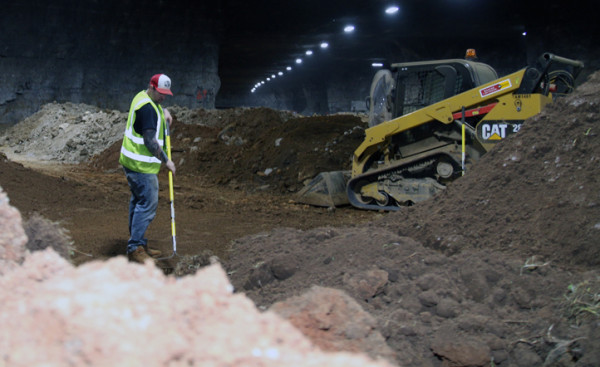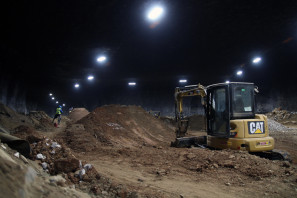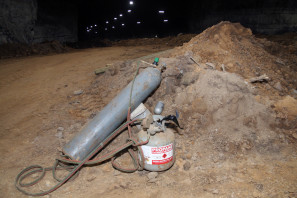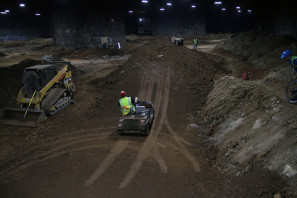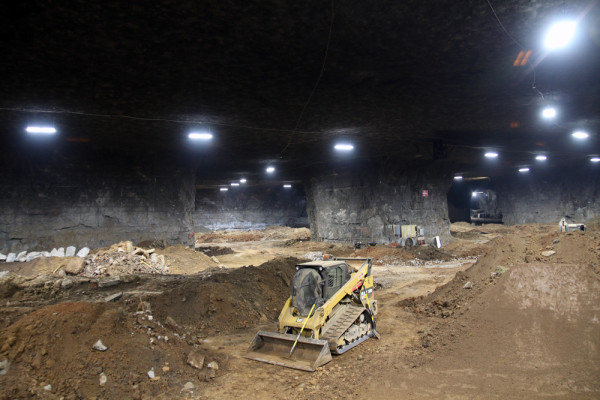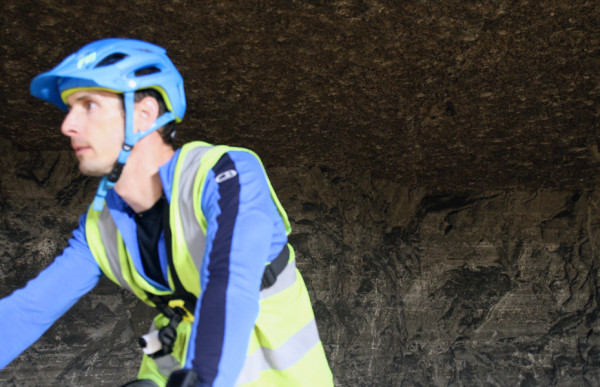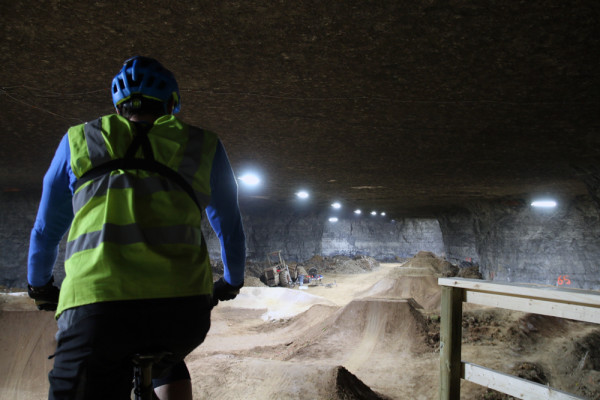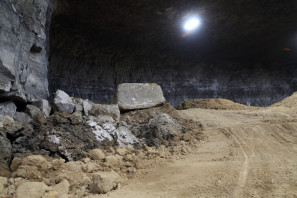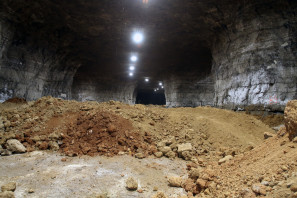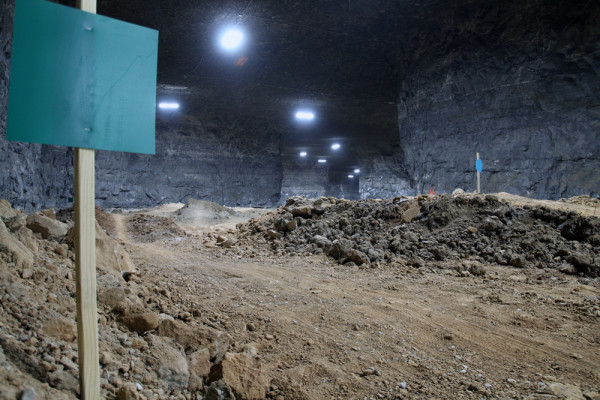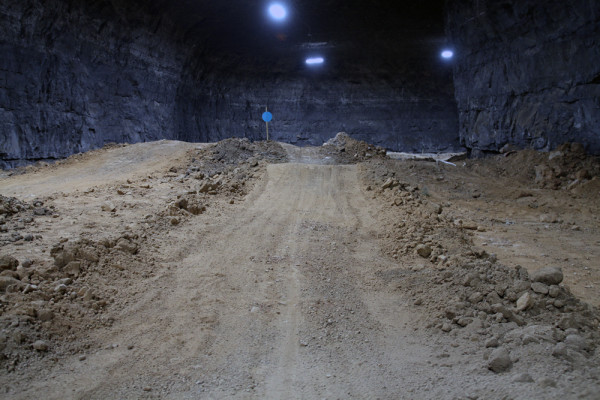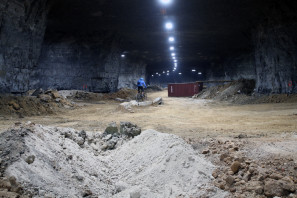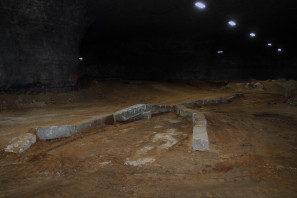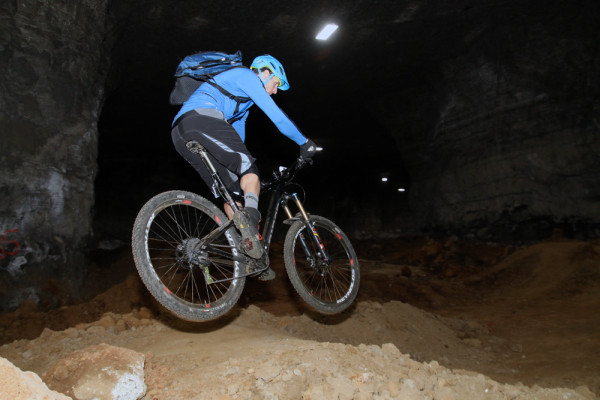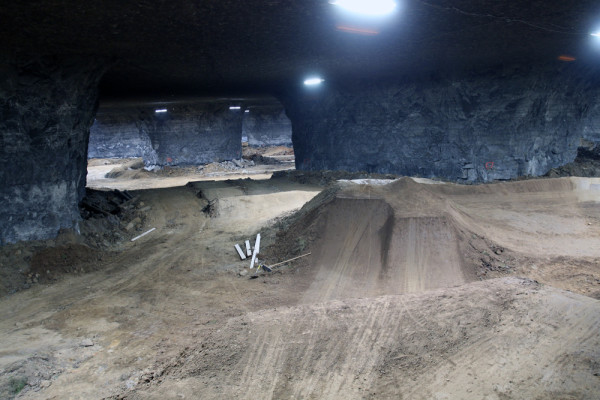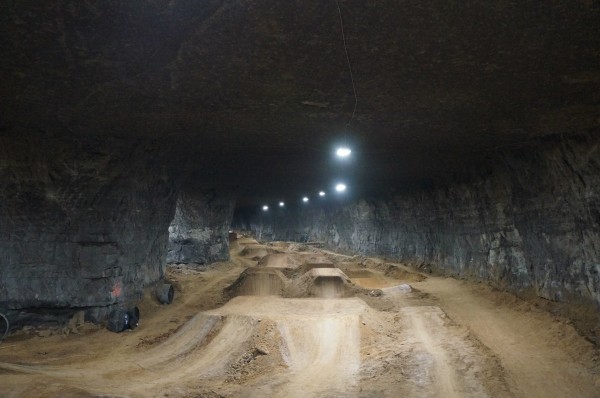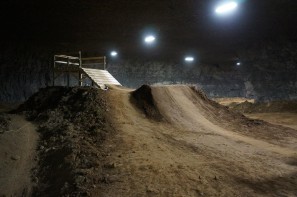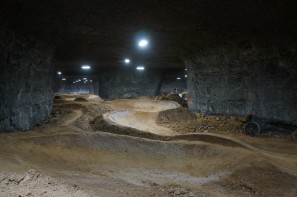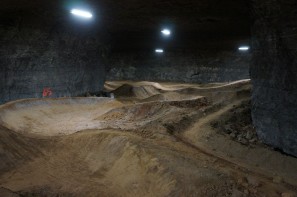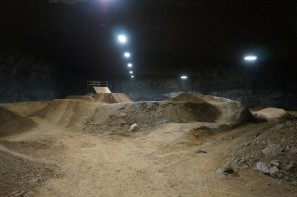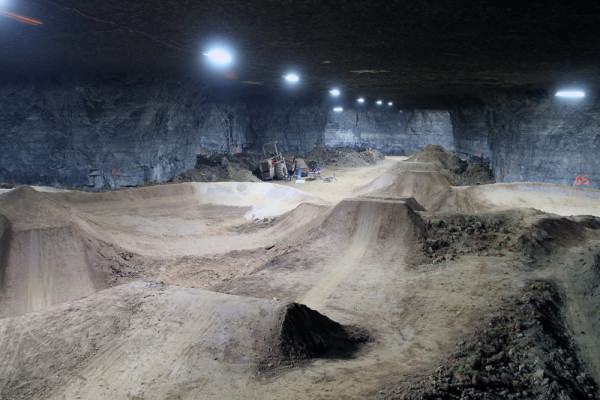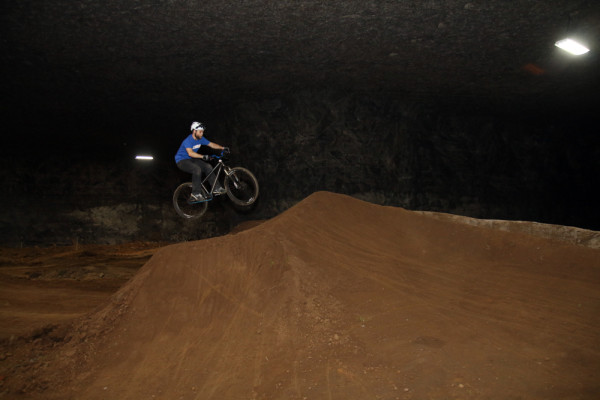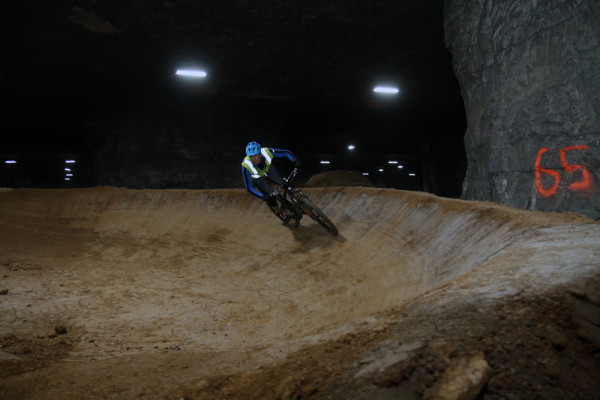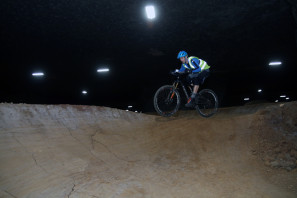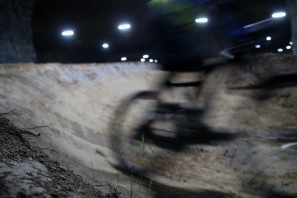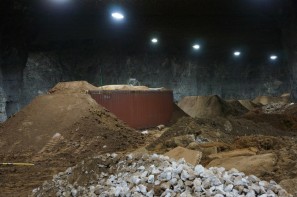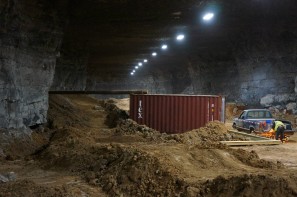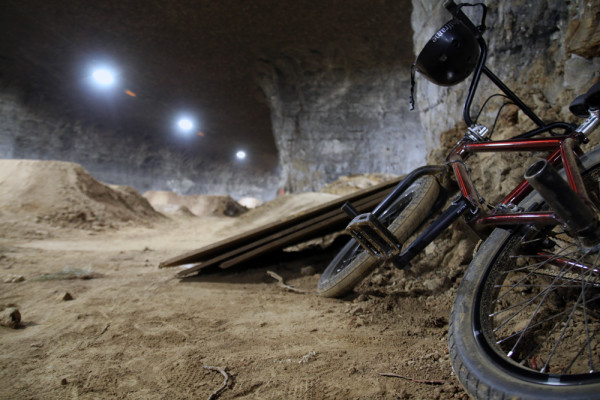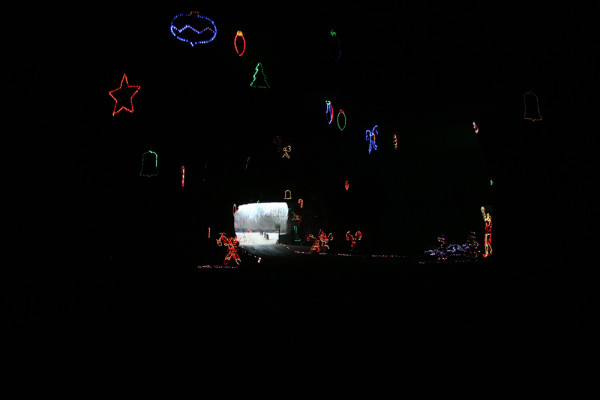Beneath the streets of Louisville, Kentucky, there lurks a monster. But this is no horror story, it’s one of dreams. Specifically, the wild dream to turn the largest cavern in the state of Kentucky into a multi-faceted business park that will soon be home to the largest underground bike park in the world. What sounds like an absolutely insane idea comes to us from co-owners of the Louisville Mega Cavern, Jim Lowry, Tom, and Don Tyler. After all, as Jim told us, their motto is “you have to be a little crazy.”
Crazy doesn’t begin to describe the Mega Cavern itself. Opened in the 1930’s by Ralph Rogers as a limestone mine, the man-made structure had been mined 24 hours a day for 42 years straight. When the digging was complete it had left a massive cavern with 4 million sq. feet and over 17 miles of passage ways. Considered to be the largest building in the state of Kentucky, the decision to turn the Mega Cavern into a business park required the creation of new building codes due to the out-of-the-ordinary circumstances.
After purchasing the cavern in 1989, Jim and his partners began a recycling operation inside in 1992 which still runs to this day. It wasn’t until 1999 that they started building offices inside for local businesses to lease, which now accounts for a half million square feet inside the cavern. Before any businesses moved in, the owners were faced with an interesting dilemma. The ceilings were so high -more than 90ft in some spots- that prospective customers came in and couldn’t picture the space being utilized, so they left. Eventually, enough dirt was brought in to raise part of the floor 62 feet, leaving a 24 foot high ceiling which was standard for warehouses at the time. Above the 24 foot high ceilings, there is another 26 feet of solid limestone – enough for geologists to call it one of the safest places in Kentucky. So safe, in fact, that it was one of the largest fall out shelters during the Cuban Missile Crisis capable of housing 50,000 people, and still acts as a safe haven for vaults and other storage today.
Even though the cavern has a massive heating and air conditioning system, Jim said it’s never used. With a nearly constant 58º F temperature, body heat and heat radiating from computers and equipment is enough to keep it comfortable. That makes it ideal for an indoor bike park as well as the zip line and ropes course since it remains warm in the winter and cool in the summer.
Considering how little we actually saw of the cavern, it’s hard to process just how big it really is. One of their biggest attractions this time of year is the Lights Under Louisville – a 1.2 mile drive through the cavern in the family vehicle to see an expansive display of 2 million Christmas lights. Even though they are adding a 385 thousand square foot bike park, it seems like they are just starting to scratch the subterranean surface…
After exiting the highway, the GPS said we were close which seemed impossible. Still in the middle of suburbia, a nondescript side road took us past the grocery stores and fast food restaurants to the entrance of the Mega Cavern which is hiding right in the middle of everything. Even with the imposing limestone cliffs staring you in the face it still doesn’t seem that big. That is, until you realize how many things are going on underneath the surface evidenced by the growing Business Center sign.
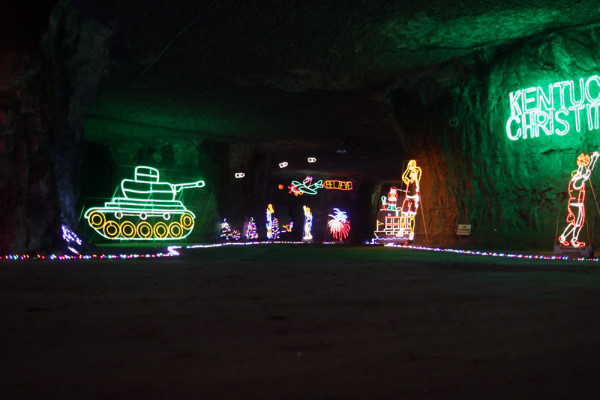
While the bike park will eventually have its own entrance, for us the easiest way in was the same way as the cars for Lights Under Louisville. By dusk, there was a line of cars stretched past the entrance making their claim of one car every 8 seconds during peak times seem entirely plausible.
Instead of taking a left and following Candy Cane Lane to a Kentucky Christmas, heading straight back leads to the bike park. In addition to occupying the space below the K-Mart building as the sign would imply, the cavern also lurks under the Lousiville Zoo. And all 10 lanes of I-264. As you might imagine, without the lights the cavern is extremely dark. The bike park is lined with an energy efficient LED lighting system, which was being expanded while we were visiting to include Phase 2 of the project. Based on early feedback, the decision has been made to go ahead with Phase 2 rather than waiting until after the park opens.
According to the lead builder and designer of the park, Joe Prisel, Phase 2 will include instructional areas plus a number of smaller jumps. Good news for beginners, because some of the jumps at the back are pretty big!
Doing what he does best, as the lead architect of the Mega Cavern bike park, Joe Prisel has a long history of building bicycle playgrounds. One of the original builders for Ray’s MTB Cleveland, Joe eventually moved to Washington state where he owns and operates Burlington Bike & Action Sports Complex. After proving he knows what he’s doing with indoor dirt jumps, Joe was tapped by Jim Lowry to design and build the Mega Cavern park.
After admitting to us that he didn’t know the first thing about building a bike jump, Jim Lowry wanted to give Prisel free rein on the build. That vote of confidence appears to be paying off as the park comes together. According to Prisel, he has felt like he was held back on previous projects, but the Mega Cavern is turning out to be exactly what he envisioned.
Anyone who has ever built a pump track or dirt jumps knows that truckloads of dirt are expensive. After seeing just how much dirt was being dumped into the cavern, we wondered aloud just how much it was racking up and where it was coming from. We were surprised to hear that not only were construction companies dumping the dirt there voluntarily, but they are actually paying the Mega Cavern to get rid of it. Not a bad deal.
Because of the varying nature of the dirt and the natural textures of the rock walls, the inside of the park is fascinating from a visual aspect. Everywhere you turn it looks a little different giving the feeling of riding outside, all while underground.
Built around a massive line full of advanced jumps in the center, the Mega Cavern will have something for everyone and all skill levels. Starting with a green easy loop around the entire premise, the trails and jumps get harder as you work your way towards the center line. Most of the jumps and trails were in varying states of completion, but it’s coming together pretty quickly since construction only just started in October.
From the top of the wooden roll in, you are treated with a number of lines including the big line down the middle. Heading towards the hip on the left will redirect you to the Quad Berm which dumps you out into the intermediate jumps.
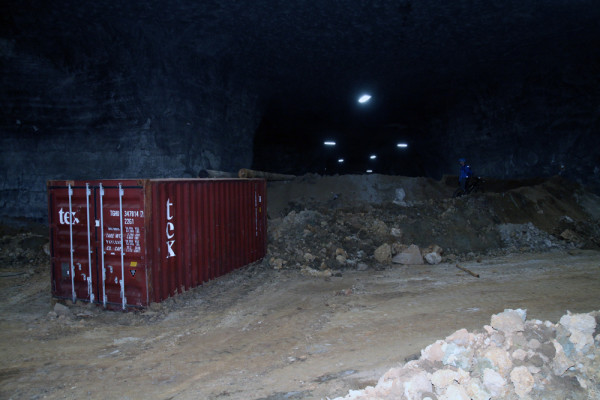
Along with dirt and rocks, additional features are being built out of items like shipping containers which adds a bit of elevation to the trails.
Looking down towards the start of the intermediate jumps, Joe’s Lairdframe BMX leaning against the wall highlights an important feature of the Mega Cavern Bike Park – its versatility. This is the first bike park that I have been to that I truly felt would be just as much fun on a full suspension mountain bike as on a dirt jumper, or on a BMX. Even though you are constantly reminded that you are riding underground in a cavern, the feeling of riding on real dirt trails will certainly be worth the price of admission whenever the weather outside gets frightful.
Just how much will entry into the park set you back? The final price is still TBD, but we’re told to expect similar prices for parks like Ray’s MTB. If everything goes according to plan, the Mega Cavern Bike park should be open and operational by the end of January, 2015.
When we were done it was time to head towards the light at the end of the tunnel – though it certainly won’t be our last time at the Mega Cavern. For more photos check out the Facebook gallery.
We put together a quick ride through of the Bike Park’s outer loop. This is basically the green loop, though it will change a bit by the time the park is finished. Not shown in the video is the entire center of the park. It’s big.
